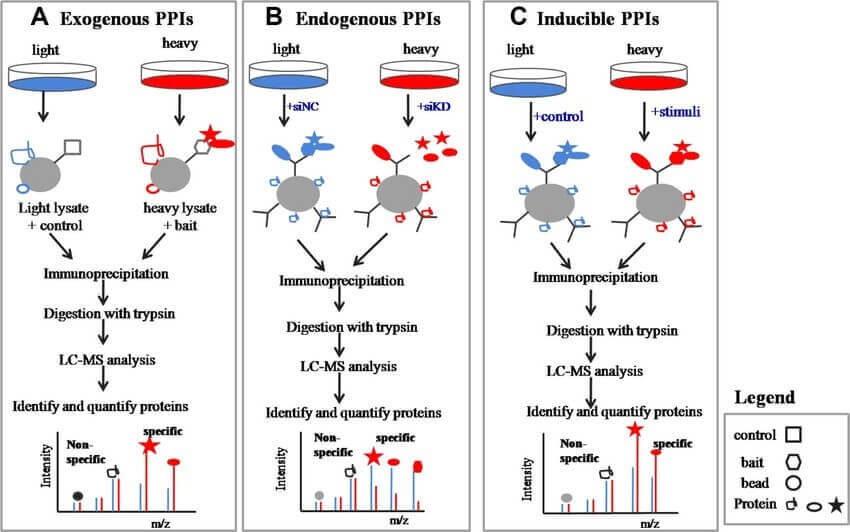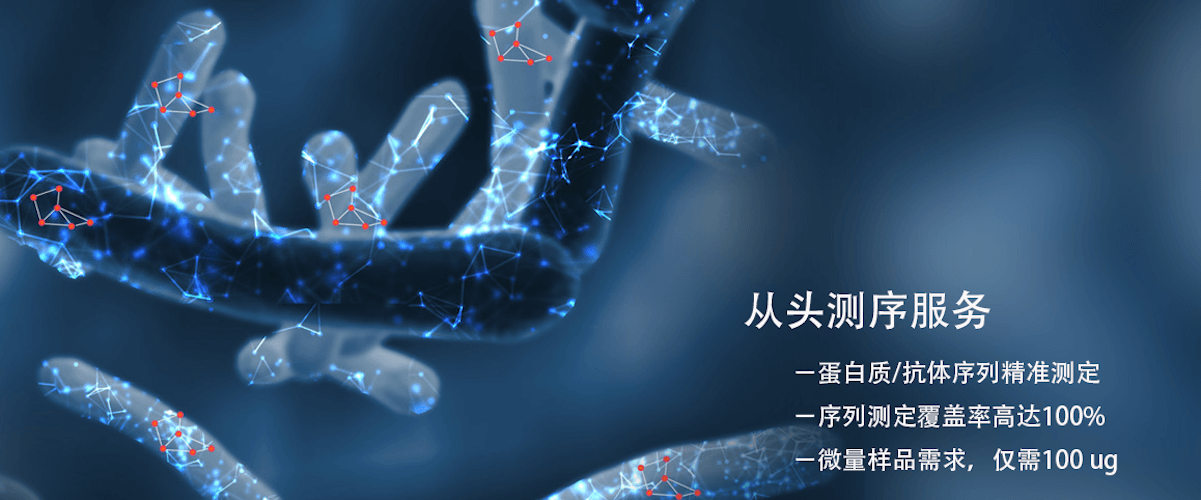SILAC and Immunoprecipitation Mass Spectrometry Combined Protein Interaction Analysis
Co-Immunoprecipitation (CoIP) is a classical method for studying protein interactions based on the principle of antibody specificity in recognizing specific antigens. CoIP is commonly used to test protein interactions under physiological conditions, and when combined with mass spectrometry (MS), it can be used to identify and discover new interacting proteins. BGI usesSILACmethod to label experimental and control group cells before conducting Co-IP experiments, relying on the specificity of antigen-antibody reactions to isolate the immune complex. LC-MS/MS is then used to qualitatively and quantitatively detect proteins in the immune complex; when the content of a particular protein reaches a statistically significant difference between the experimental and control groups, it is determined that this protein interacts with the protein under study, greatly reducing the possibility of false positive results in protein interactions.SILACtechnology combined with Co-IP-MS technology can be used for high-throughput quantitative analysis of protein interaction networks under specific conditions.
SILACcombination introduces mass differences from the source, reducing systematic errors in the experiment, providing rich quantitative information with high accuracy. BGI uses Thermo Fisher's Q Exactive HF mass spectrometry platform, Orbitrap Fusion mass spectrometry platform, and Orbitrap Fusion Lumos mass spectrometry platform combined with Nano-LC, to offer a SILAC and CoIP-MS protein interaction analysis service package. You just need to tell us your experimental purpose and send your cells to us, and we will take care of all subsequent tasks, including cell culture, cell labeling, protein extraction, antibody IP, efficiency testing, protein digestion, peptide separation, mass spectrometry analysis, raw data analysis, and bioinformatics analysis.
SILAC-based CoIP-MS experimental workflow

Chen, X. L. et al. Proteomics. 2015.
SILAC-based CoIP-MS experimental workflow
BTP-SILAC-based CoIP-MS technical features and advantages
• Retain protein structure and post-translational modifications as much as possible
• Protein interactions occur in a natural state, avoiding artificial influence
• Can isolate naturally interacting protein complexes
• High throughput, can rapidly and comprehensively analyze all interacting proteins
• Can distinguish non-specific binding proteins by comparison with control groups, low false positives
• Can compare and analyze the relative abundance of each interacting protein
SILAC-based CoIP-MS experimental project sample requirements
1. You only need to send frozen cells on dry ice to us, ensuring that the cells can be passaged at least five times.
2. If you need to label the cells yourself and complete processes such as cell stimulation, you only need to send the labeled and processed cell samples or protein samples on dry ice to us; for each sample, ensure a total protein content of at least 300 µg.
Note:Please use sufficient dry ice for sample transportation and choose a faster shipping method to reduce the possibility of sample degradation during transportation.
Bilingual project report
In the technical report, BGI will provide you with a detailed bilingual report in both Chinese and English, including:
1. Experimental steps (Chinese and English)
2. Relevant mass spectrometry parameters (Chinese and English)
3. Detailed information of identified proteins
4. Mass spectrometry images
5. Raw data
6. Bioinformatics analysis
SILAC-based CoIP-MS one-stop service
You only need to place an order and send the samples
BGI one-stop service completion: sample processing - on-machine analysis - data analysis - project report
Related services
Protein interaction analysis
CO-IP immunoprecipitation method for protein interaction analysis
Protein interaction mass spectrometry analysis
GST pull-down protein interaction analysis
Cross-linking method protein interaction analysis
Far-Western Blot analysis
Label transfer method protein interaction analysis
Pull-down target protein mass spectrometry identification
Quantitative proteomics analysis based on SILAC/Dimethyl labeling
How to order?





